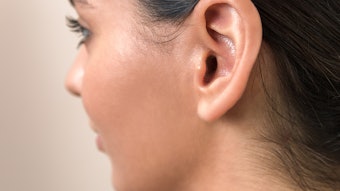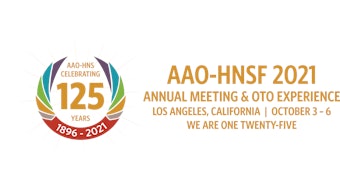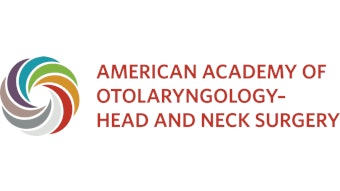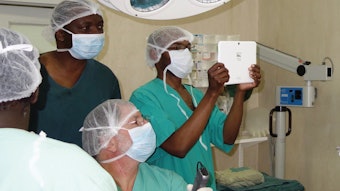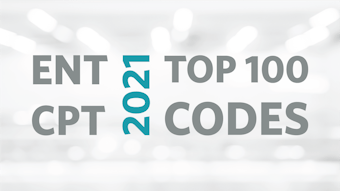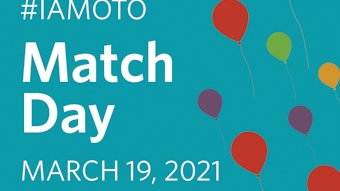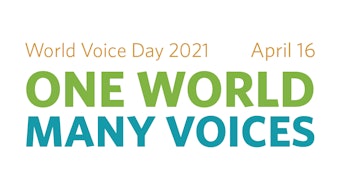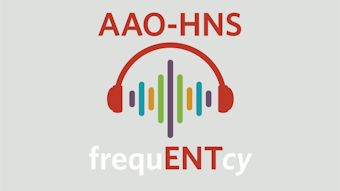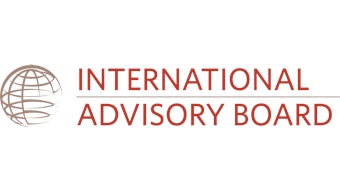When Should Adults with Bilateral Hearing Loss Be Referred for Cochlear Implantation?
Over the past several decades, cochlear implantation (CI) has become a well-established treatment modality for adults with moderate-to-profound sensorineural hearing loss (SNHL) and who have experienced limited benefit from hearing aids.
Riddhima Agarwal, BS, MS; Aaron C. Moberly, MD; and Varun V. Varadarajan, MD

For adults with bilateral SNHL, clinicians typically use routine audiometric tests, such as unaided pure tone audiometry, speech reception thresholds, and word recognition scores (WRS) to attempt to make a decision regarding referral for CIE. In the United States, CIE consists of a battery of audiologic tests in the best-aided condition to evaluate speech recognition using sentences (e.g., AzBio), with or without the incorporation of background noise. Private insurance companies typically require patients to score ≤60% on sentence recognition (with or without background noise), which is less restrictive than the Medicare requirement of scores ≤40%. At their providers' discretion, patients may be referred for CIE when they have bilateral moderate-to-profound SNHL, severely impaired speech discrimination, or if they express dissatisfaction with hearing amplification. Although the decision to refer patients with greater degrees of hearing loss (e.g., bilateral severe-to-profound SNHL) and grossly impaired speech discrimination may appear straightforward, patients with “borderline” performance on routine audiologic testing are less obvious and may be overlooked for referral, when in fact they may ultimately benefit from CI. Several proposed strategies have been published in an attempt to provide referral criteria for CIE based on routine unaided audiologic evaluation, reviewed in a recent Triological Society Best Practice article.2
In a prospective study, Lupo and colleagues investigated the preimplant performance of 100 adults with bilateral moderate-to-profound SNHL who were seeking CIE due to dissatisfaction from bilateral hearing aids. They concluded that patients with bilateral moderate-to-profound SNHL and 3-frequency pure tone averages (3FPTA) ≥70 dB HL do not typically benefit sufficiently from bilateral hearing aids and should be referred for CIE.3 In a retrospective study of 139 patients, Gubbels et al. correlated pure tone thresholds and unaided WRS with aided sentence-level recognition scores from CIE that were used to define candidacy.4 They concluded that patients with individual pure tone thresholds (0.25, 0.5, 1 kHz) of ≥75 dB HL and/or a monosyllabic WRS of ≤40% in the better ear have >80% probability of meeting traditional CI candidacy. In a retrospective study of 185 patients, Hoppe et al. plotted 4-frequency pure tone average (4FPTA) against PBmax (maximum unaided monosyllabic WRS obtained by sequentially increasing volume) to create a probabilistic machine-learning model for predicting CI candidacy with a sensitivity and specificity of 87% and, 91% respectively. They concluded that patients should be referred for CIE if the linear expression produced by this model (PBmax [%] < 4FPTA [dB] – 8) holds true for either ear tested.5 In a follow-up study of 128 “borderline” candidates (4FPTAs >80 dB HL but aided WRS ≤50%), the authors observed that CI improved WRS in 98% of these patients.6 Hunter and Tolisano retrospectively reviewed 206 patients and used regression models to predict CI candidacy. The authors concluded that using a WRS <60% in the better hearing ear as a referral threshold provides a sensitivity and specificity of 83.1% and 63.8%, respectively.7 Lastly, in a retrospective study of 529 patients, Zwolan and colleagues tested the effectiveness of using a “60/60” guideline (better ear PTA ≥60 dB HL and better ear unaided WRS ≤60%) to refer patients for CIE. Their referral guideline identified patients that met CI candidacy with 96% sensitivity and 66% specificity.8
These published strategies are some of the first to use elements from routine unaided audiometry to assist in identifying CI candidates. Predicting candidacy from routine audiologic evaluation is desirable given that it is easier, less time-consuming, and more familiar to all otolaryngologists and audiologists than a CIE.4 However the referral recommendations, incorporation of background noise, or specific tests (i.e., PBmax is also not routinely obtained in all centers), and ear laterality (e.g., using criteria based on the better or the worse ear) vary between studies. Furthermore, the accuracy for predicting candidacy in each study may not apply to other institutions’ patient populations depending on the referral sources, patient demographics, and the institutions’ testing paradigms. Protocols for use of background noise during testing, for example, vary based on institutional philosophy and may influence how many additional candidates are identified. Some institutions incorporate background noise of +10 signal-to-noise ratio (SNR) if a patient fails to meet candidacy in quiet, then +5 SNR if the patient fails in +10 SNR background noise. Other centers may be more aggressive and routinely test all patients in +5 SNR. Depending on the center’s available resources and willingness to accept false positive CI referrals, providers may be hesitant to refer based on broad ranges of audiometric cutoffs or a specific frequency pure tone threshold (rather than a PTA). Recommendations may also continue to evolve as alternative candidacy criteria (e.g., consonant-nucleus-consonant test) are widely accepted clinically as well as by insurance payors.
Based on the existing literature, a conservative recommendation would be that patients with an unaided 3FPTA (0.5, 1, and 2 kHz) of 70 dB HL or worse and/or unaided WRS ≤40% in the ear to be implanted are highly likely to be CI candidates when tested in quiet and should be referred for CIE. If a higher false positive referral rate is acceptable (i.e., negative CIE), and/or if candidacy is determined by testing in background noise, patients with 3FPTA of worse than 60 dB HL and WRS ≤60% in the better ear should be considered for CIE.2 An ideal referral guideline would maximize sensitivity while limiting unnecessary time and resource expenditure associated with negative referrals. Nonetheless, there may be inherent value in referral for a negative CIE; patients and families become established with a center for future evaluations and are also made aware of CI technology if their hearing loss progresses. The ultimate goal is to optimally meet the needs of patients with SNHL, identify patients for CIE who would previously have been overlooked, and close the gap of underutilization of CI technology.
References
1. Sorkin DL. Cochlear implantation in the world’s largest medical device market: utilization and awareness of cochlear implants in the United States. Cochlear Implants Int. 2013;14(sup1):S12-S14. doi:10.1179/1467010013Z.00000000076
2. Varadarajan V V., Harris MS, Moberly AC. When should adults with bilateral hearing loss be referred for cochlear implant evaluation? Laryngoscope. 2020. doi:10.1002/lary.28969
3. Lupo JE, Biever A, Kelsall DC. Comprehensive hearing aid assessment in adults with bilateral severe-profound sensorineural hearing loss who present for cochlear implant evaluation. Am J Otolaryngol - Head Neck Med Surg. 2020;41(2):102300. doi:10.1016/j.amjoto.2019.102300
4. Gubbels SP, Gartrell BC, Ploch JL, Hanson KD. Can routine office-based audiometry predict cochlear implant evaluation results? Laryngoscope. 2017;127(1):216-222. doi:10.1002/lary.26066
5. Hoppe U, Hast A, Hocke T. Audiometry-based screening procedure for cochlear implant candidacy. Otol Neurotol. 2015;36(6):1001-1005. doi:10.1097/MAO.0000000000000730
6. Hoppe U, Hocke T, Hast A, Iro H. Cochlear implantation in candidates with moderate-to-severe hearing loss and poor speech perception. Laryngoscope. 2020:1-6. doi:10.1002/lary.28771
7. Hunter JB, Tolisano AM. When to refer for a hearing-impaired patient for a cochlear implant evaluation. Otol Neurotol. 2020. doi:10.1097/mao.0000000000003023
8. Zwolan TA, Schvartz-Leyzac KC, Pleasant T. Development of a 60/60 guideline for referring adults for a traditional cochlear implant candidacy evaluation. Otol Neurotol. April 2020:1. doi:10.1097/MAO.0000000000002664
